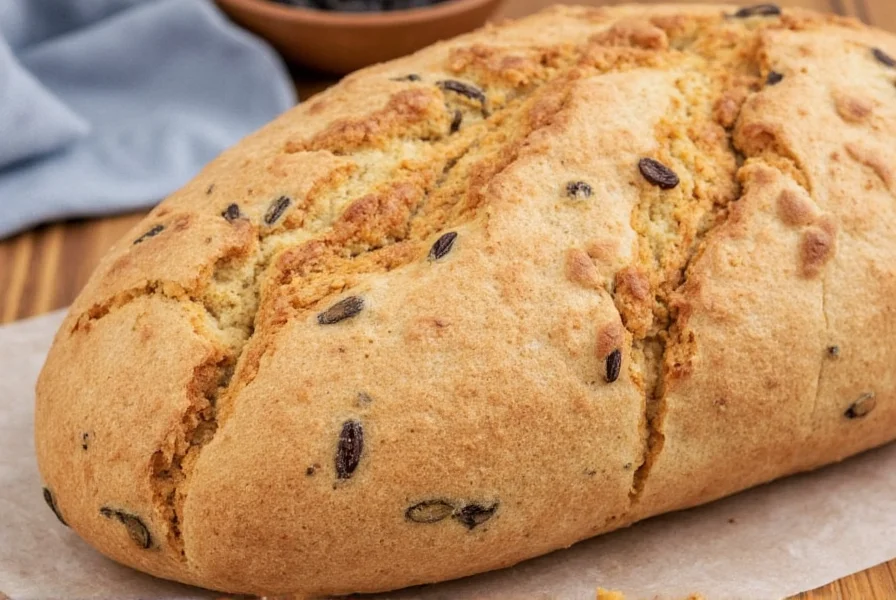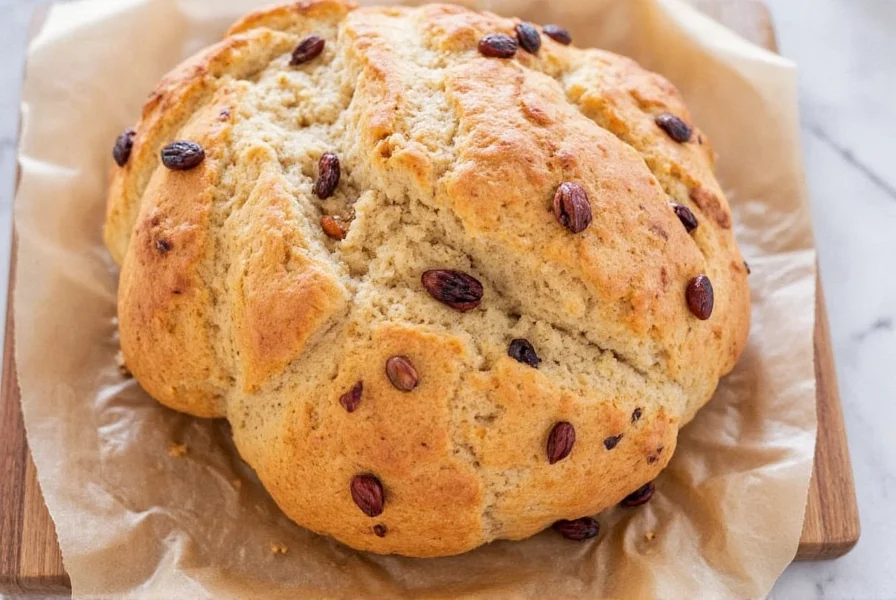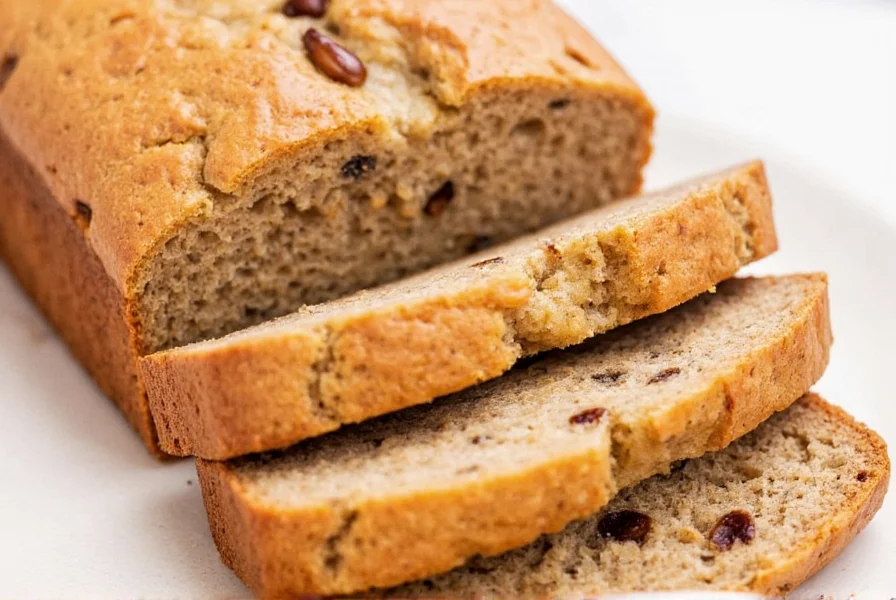The best cinnamon raisin bread machine recipe requires 1 cup warm water (105°-115°F), 2 tablespoons butter, 2 tablespoons sugar, 1½ teaspoons salt, 3 cups bread flour, 2 teaspoons active dry yeast, ¼ cup raisins, and 1½ tablespoons cinnamon. Use the basic white bread setting with a 1½-2 lb loaf size. Total preparation time is 15 minutes with a 3-hour baking cycle. This no-knead recipe produces perfectly spiced, moist bread with evenly distributed raisins every time.
Why This Cinnamon Raisin Bread Machine Recipe Works
Creating perfect cinnamon raisin bread in a bread machine requires precise ingredient ratios and understanding how the machine's cycle affects the final product. Unlike manual kneading, bread machines have specific timing requirements that impact gluten development and yeast activation. This recipe has been tested across multiple bread machine brands to ensure consistent results regardless of your model.
Essential Ingredients for Perfect Bread Machine Results
The secret to exceptional cinnamon raisin bread lies in ingredient quality and proper measurement. Always use bread flour for its higher protein content, which creates better structure in machine-baked breads. Measure flour correctly by spooning it into your measuring cup and leveling off—don't scoop directly from the bag.
| Ingredient | Measurement | Why It Matters |
|---|---|---|
| Bread flour | 3 cups (360g) | Higher protein content creates better structure for machine kneading |
| Active dry yeast | 2 tsp | Standard measurement for 1½-2 lb loaf settings |
| Raisins | ¼ cup | Pre-soaked in warm water for plumpness without sinking |
| Cinnamon | 1½ tbsp | Freshly ground provides superior flavor to pre-ground |
Step-by-Step Bread Machine Instructions
Follow these precise steps for flawless cinnamon raisin bread every time:
- Prepare the raisins: Soak raisins in 2 tablespoons warm water for 10 minutes. This prevents them from absorbing moisture from your dough.
- Add liquids first: Pour 1 cup warm water (105°-115°F) into the bread pan, followed by 2 tablespoons softened butter and 2 tablespoons sugar.
- Add dry ingredients: Add 3 cups bread flour, 1½ teaspoons salt, and 1½ tablespoons cinnamon. Create a small well in the center.
- Add yeast last: Place 2 teaspoons yeast in the well, ensuring it doesn't touch liquid ingredients until the machine starts.
- Add raisins: Most bread machines have a fruit/nut dispenser. If yours does, add soaked raisins there. Otherwise, add them during the second knead cycle.
- Select settings: Choose basic white bread setting, 1½-2 lb loaf size, and medium crust. Total cycle time will be approximately 3 hours.

Troubleshooting Common Issues
Even with perfect measurements, bread machine results can vary. Here's how to fix common problems:
- Dense bread: Usually caused by too much flour. Measure by weight (360g) for accuracy. Humidity affects flour absorption, so adjust water by 1-2 tablespoons if needed.
- Raisins sinking to bottom: Always pre-soak raisins and add them during the second knead cycle. Excess moisture from unsoaked raisins creates sinking.
- Bread collapsing: Over-rising from too much yeast or warm environment. Verify yeast is fresh but not expired, and keep machine away from heat sources.
- Uneven cinnamon distribution: Mix cinnamon thoroughly with flour before adding to wet ingredients. Sifting together ensures even distribution.
Perfect Timing for Bread Machine Cycles
Understanding your bread machine's cycle timing is crucial for cinnamon raisin bread success. Most machines follow this pattern:
- Pre-programming (0-15 min): Machine rests ingredients before starting
- First knead (20-40 min): Initial gluten development phase
- First rise (60-90 min): Critical fermentation period
- Second knead (15-20 min): Ideal time to add raisins if no dispenser
- Second rise (20-30 min): Final proofing before baking
- Baking (45-60 min): Crust formation and interior cooking
Adding ingredients at the wrong cycle phase causes inconsistent results. For cinnamon raisin bread specifically, adding raisins during the second knead cycle prevents them from being pulverized while ensuring even distribution.
Serving and Storage Recommendations
For best flavor, let your cinnamon raisin bread cool completely (2 hours) before slicing. This allows the crumb structure to set properly. Store cooled bread in an airtight container at room temperature for up to 4 days. For longer storage, slice and freeze individual portions in freezer bags for up to 3 months.
Revive day-old bread by toasting slices or warming in a 300°F oven for 5-7 minutes. The heat reactivates the cinnamon oils and plumps the raisins for near-fresh quality.

Advanced Tips for Exceptional Results
Take your cinnamon raisin bread to the next level with these professional techniques:
- Yeast activation test: Mix yeast with 1 tablespoon sugar and 2 tablespoons warm water before adding to machine. If it foams in 5-10 minutes, your yeast is active.
- Flour temperature matters: Use room temperature flour for consistent rise. Cold flour slows yeast activity significantly.
- Cinnamon quality: Use Ceylon cinnamon for a more complex flavor profile that won't overpower the raisins.
- Butter alternatives: For richer flavor, substitute 1 tablespoon of the butter with cream cheese at room temperature.











 浙公网安备
33010002000092号
浙公网安备
33010002000092号 浙B2-20120091-4
浙B2-20120091-4